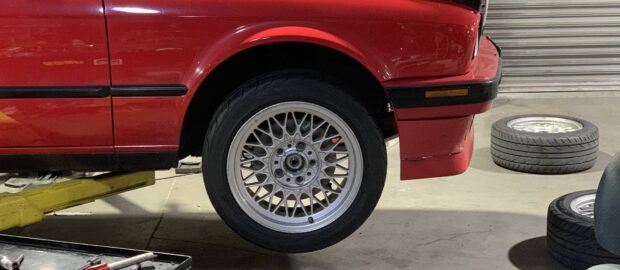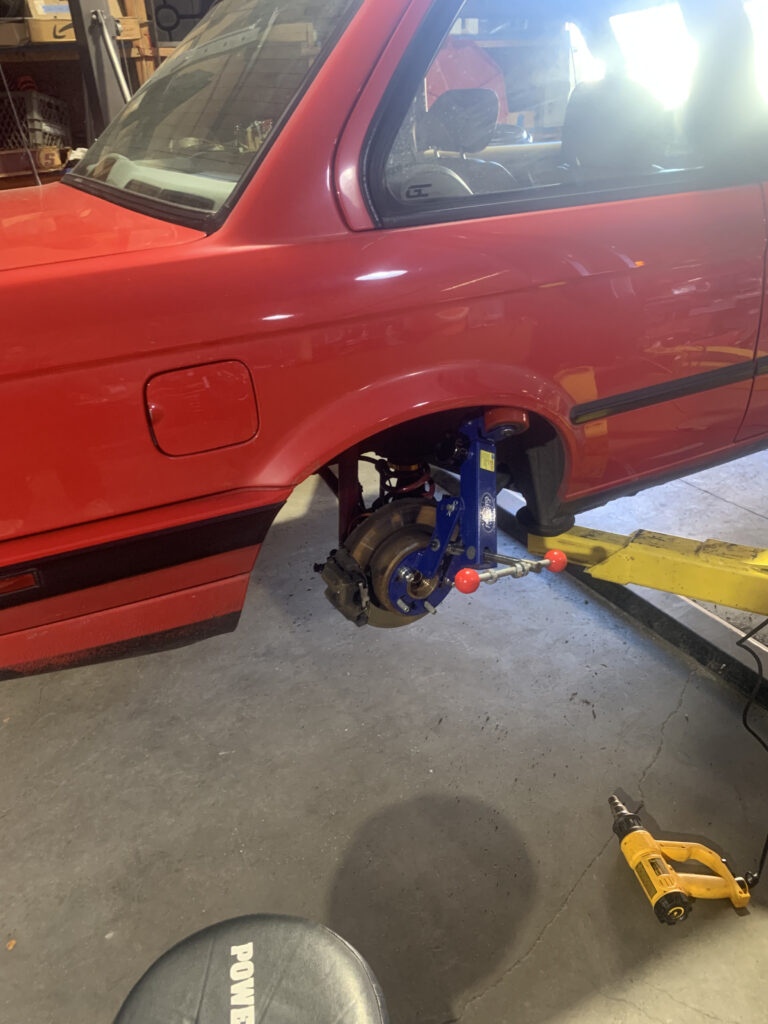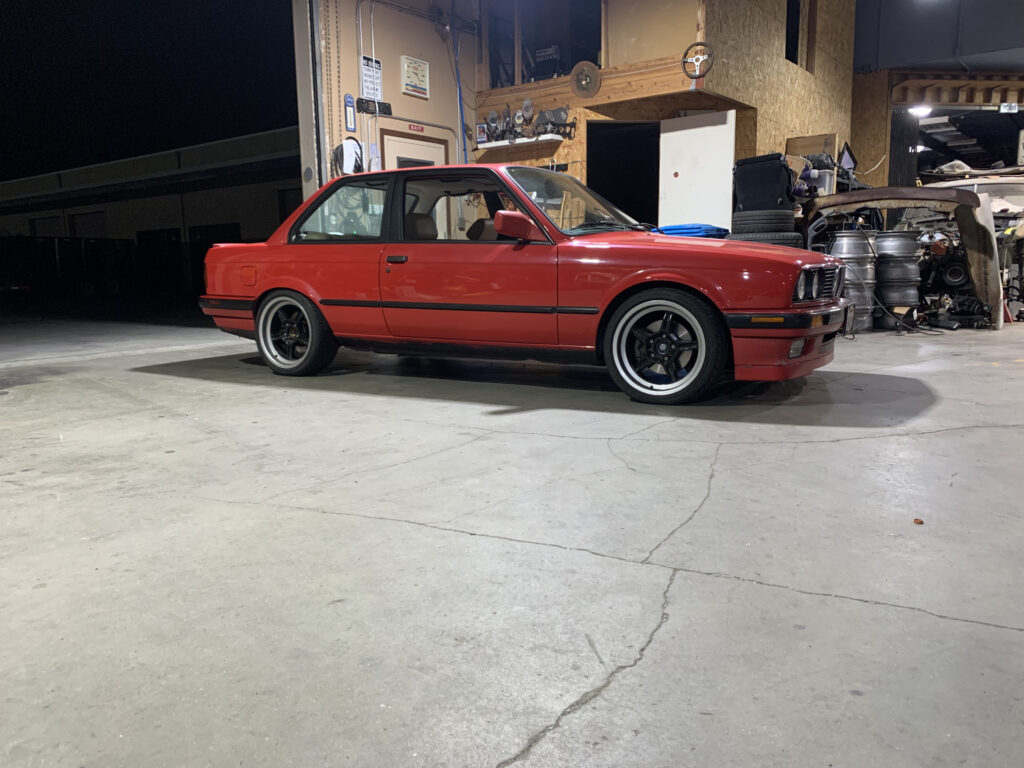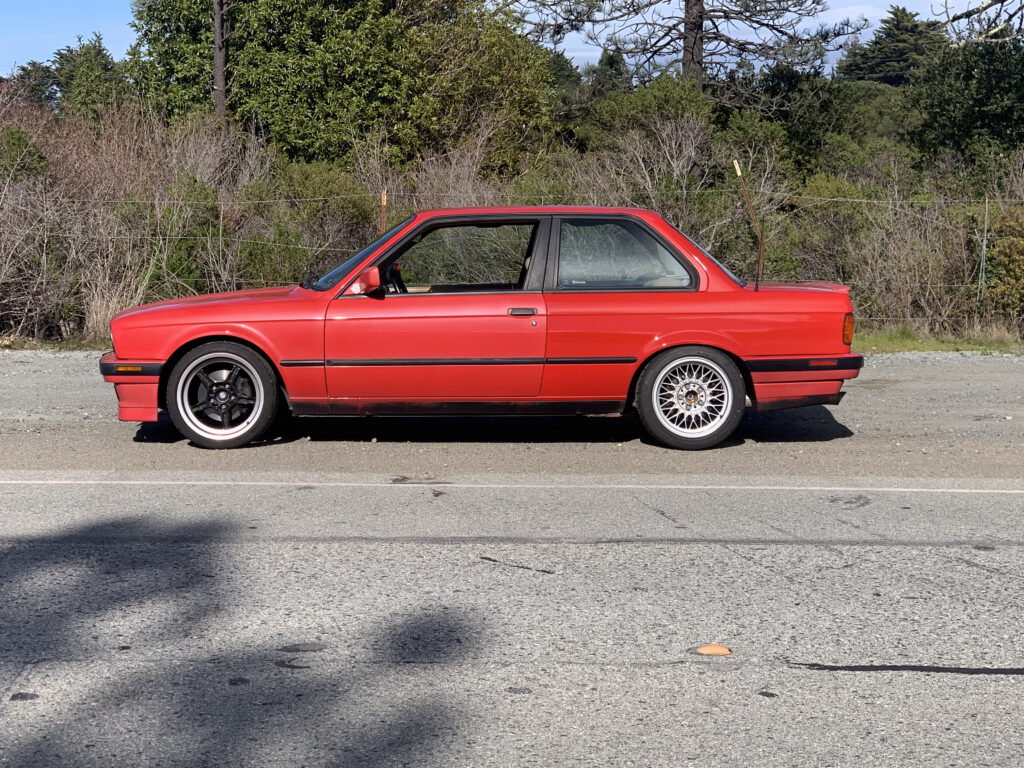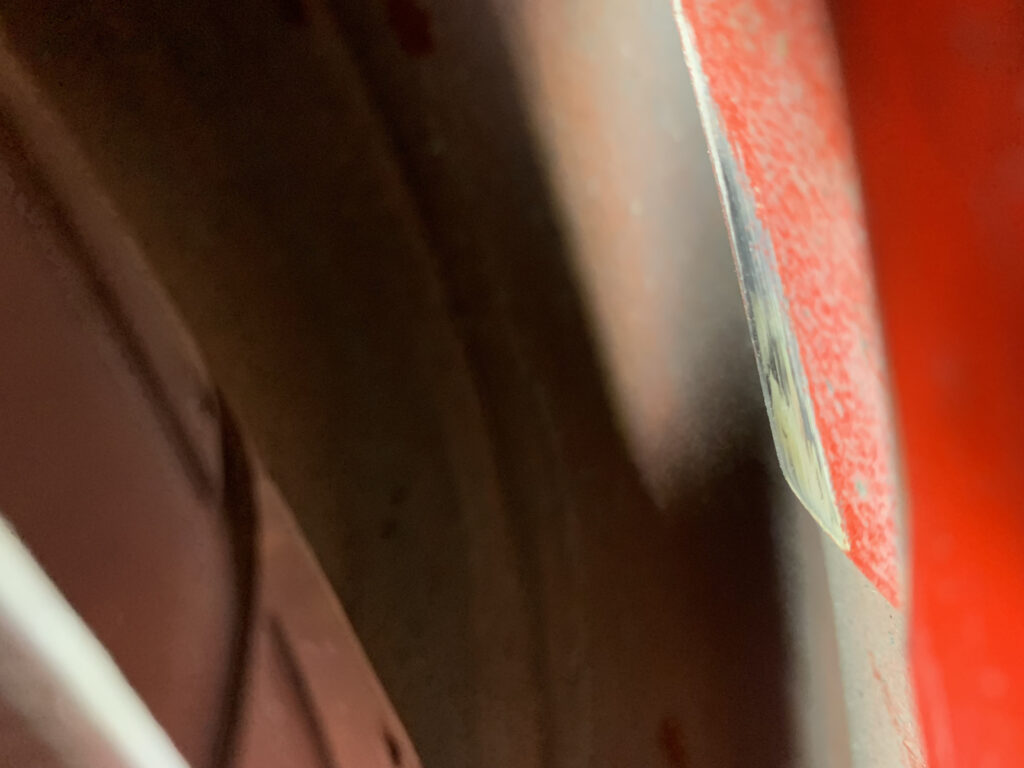Four attempts to make wheel choice marginally more convenient.
Have you ever had something continuously taunt you? Something that really doesn’t matter in the scheme of things, but curiosity gets the better of you. In my case it’s been the elusive 5-lug swap for a non-M e30. Not because there aren’t multiple ways to do the conversion, but the stars had never aligned until recently that I actually had all the right pieces to go through with it.
What Exactly is the Problem with 4-Lug?
Since 4×100 e30 wheels aren’t as widely available in the desired offsets and widths a lot of folks want, switching to 5-lug is the logical progression of longterm e30 ownership. Not only does it allow more wheel options in the 5×120 bolt pattern, but tire choices seem to be more plentiful and cheaper in certain cases. To the credit of BMW, the 4-lug brakes are actually quite sufficient in many cases. However, engine swaps with at least twice the power over stock are becoming quite common nowadays, and the stock brakes on a high powered e30 simply won’t last under track conditions.
In my case, I’m guilty of wanting more available and affordable wheel choices, and a little better brakes–but mostly wheel choice. While there are easier swap options such as using e36 parts and hub adapters, the e30 M3 setup was the most OEM+ option as it bolts right up without any compromised suspenion geometry and clears 15-inch wheels without any major track width changes (only 5mm in this case). If it’s good enough for the top dog Sport Evolution M3, then it’s more than enough for my meager needs. Additionally, due to the M3 strut design (which mimics the e28 setup it’s heavily based on), roll center spacers can be easily fitted when larger wheels are used.
So what’s the catch to using parts that the factory had fitted to an e30 M3? Just like the M3 itself, the parts have become rare and quite expensive. The first three times I tried to acquire the parts for 5-lug, I was always missing a crucial piece that was usually NLA or outrageously expensive and would sell my incomplete setup in defeat to recoup some money. Recently, through the perfect storm of sheer luck and a lot of help from friends finding parts deals, I was finally able to gather all of the bits and see if it was worth the fuss. Spoiler alert–not really.
The 5-Lug Parts Pile
In order to go through with the e30 M3 5-lug swap to a normal e30 (in my case, a late model 318is) you will need the following parts:
- 5×120 wheels & tires of your choosing
- M3 front strut assemblies with tie rod plates
- M3 rear hubs
- M3 calipers and carriers (front calipers & rear carrier bracket are M3 specific FYI)
- M3 front ABS rings (hub itself shared with e28, only abs rings are M3 specific)
- M3 or e32 master cylinder (maintains intended brake bias as late model 4-lug master cylinder has staggered step bore)
- M3 front and rear brake rotors & pads
If you want to turn your money into a disappearing magic act, many of these components can still be purchased new, but the costs would be obscene, so it’s best to try and source good condition used parts–namely the strut housings and brake components. Despite the ///M tax on many parts there are a few areas where you can still save a few bucks:
- Use e28 front hubs for 1/10 the price of an M3 hub as long as you have M3 ABS rings to swap over (or don’t need ABS like an early e30)
- Rear e-brake dust shield can be bent to clear M3 rear rotor vs. buying M3 specific dust shield and hardware
- Reuse your shocks and springs as M3 strut housings are compatible with 4-lug 51mm strut inserts and springs (in my case I had coilovers which were even easier to swap between setups)
Another factor that has brought the cost of M3 parts down ever so slightly is that KW and Ground Control now sell complete kits that don’t require core strut housings. In turn, the demand for old stock parts isn’t as strong when arguably superior plug-n-play options now exist.
Teardown Begins
Once all the parts were assembled, initial teardown began one Friday evening starting with the front end. My thought process was that I’d start with the simpler job first to build some momentum as the strut housings simply swap into place. Fortunately the control arm and tie rod ball joints separated without any hiccups, and from there I was able to swap the M3 struts onto the car. Once the housings were in place, I proceeded to bolt on the calipers and rotors.
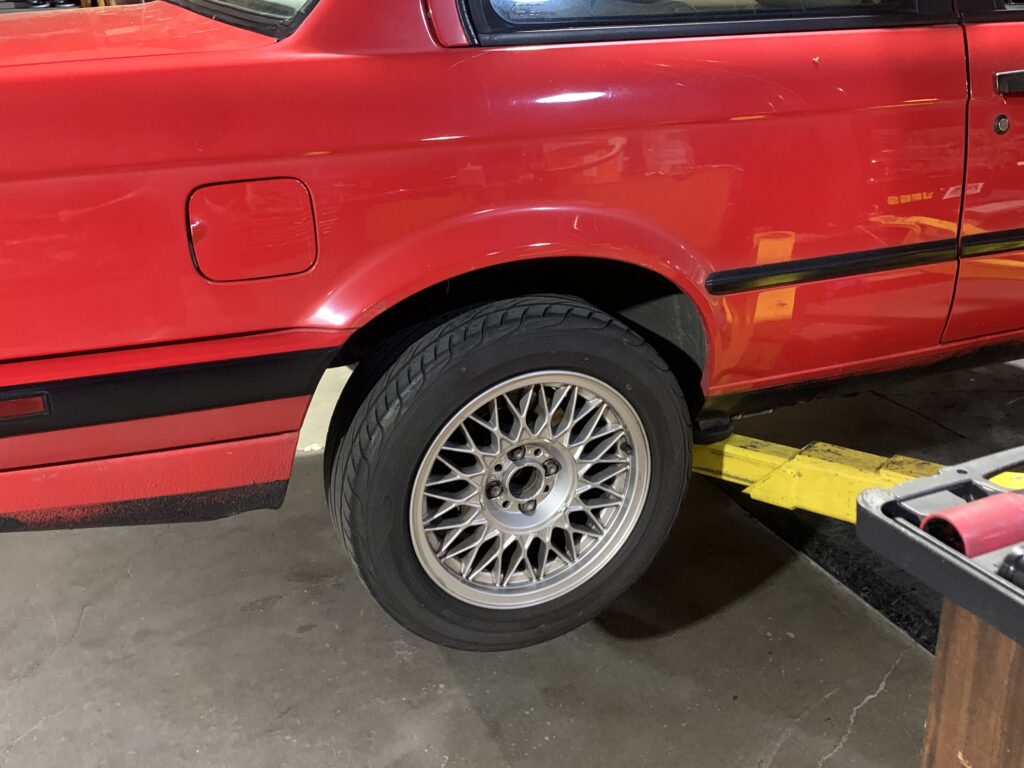

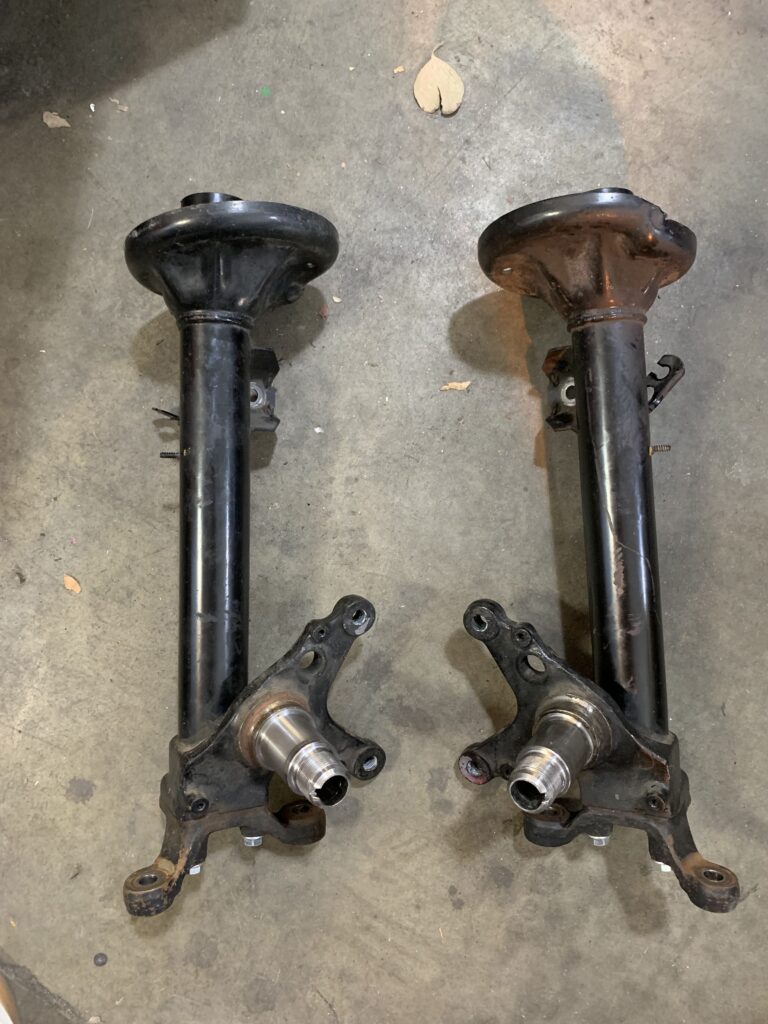
In an effort to keep the mess to a minimum, I left the 4-lug caliper attached to their lines so brake fluid didn’t leak all over the place until it was time to install the lines onto the M3 calipers. After a few hours, I called it a night and would return the following morning for the real work to commence.
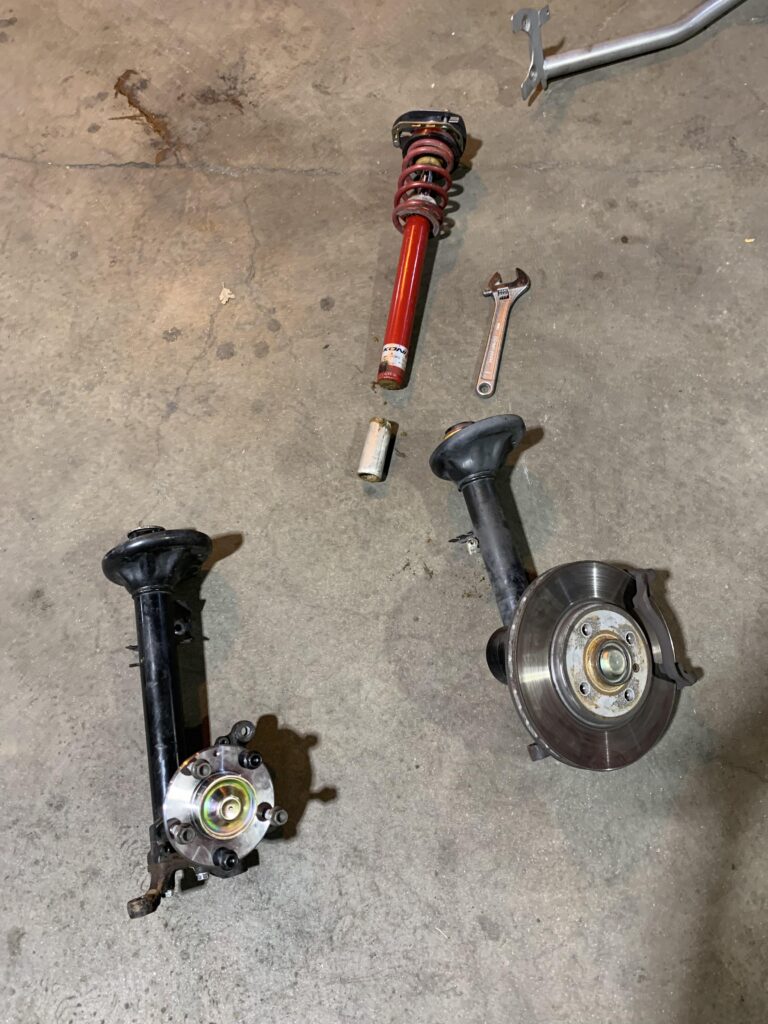
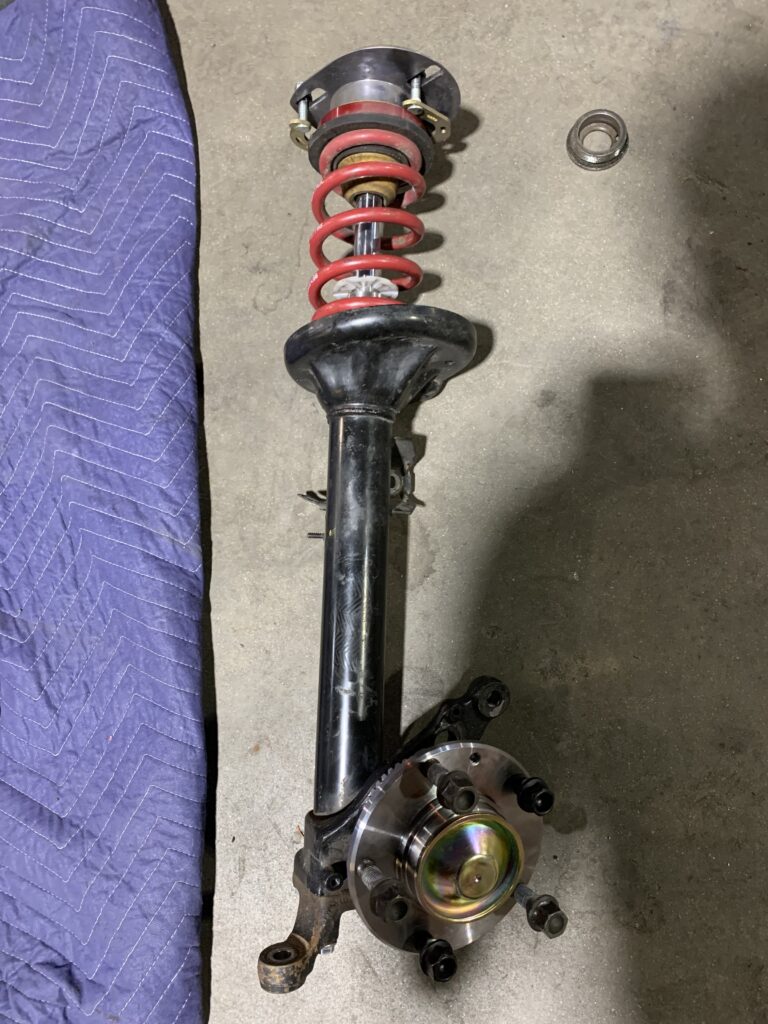
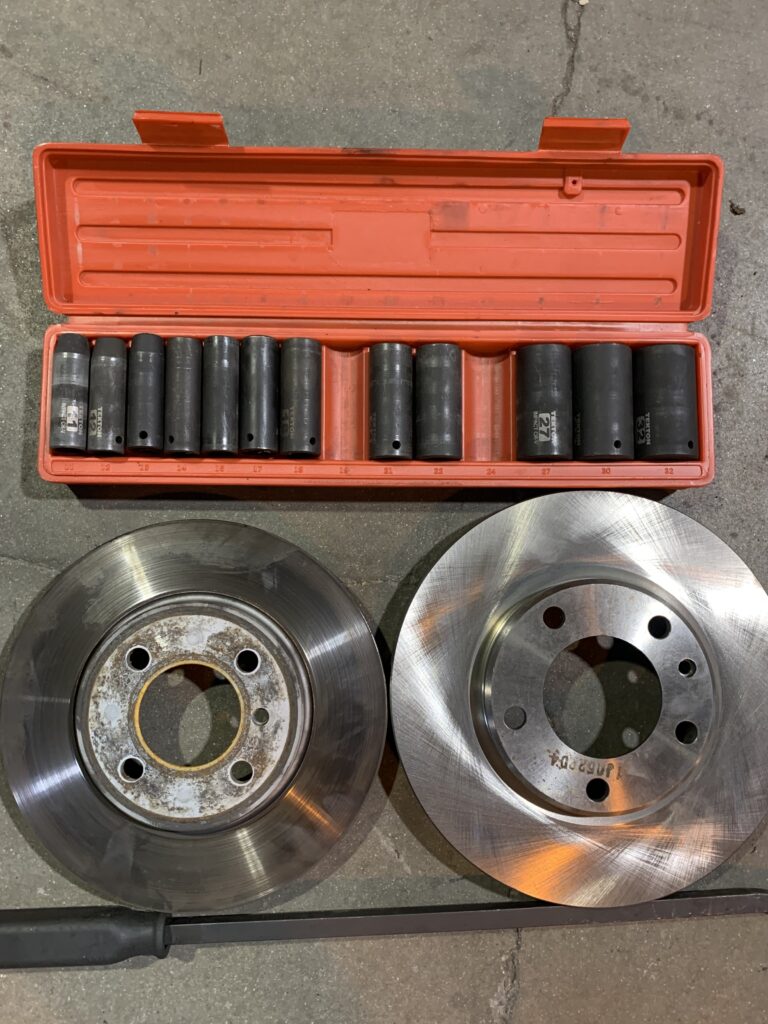
Gym Workout
The rear end was going to be a pain…in just that location! The main reason I was dreading the rear end swap was because removing the old hubs usually guaranteed a last minute invite to the arduous rear wheel bearing replacement party. To shed some light for the folks who spend their free time in more productive manners, removing the rear hubs on BMWs often ruins the wheel bearings because the inner race stays attached to the hub. So not only do you have to remove the race from the hub (usually with power tools & violence), but you have to press in new wheel bearings into the trailing arms as well. If you don’t have the right puller/installer tools, the whole process can turn into a real pig of a job.
Mentally preparing to spend several hours replacing two rear wheel bearings, I begrudgingly used a slide hammer to start pulling one of the 4-lug hubs. As luck would have it, the rear bearing remained intact. It had to be a fluke, right? So I rigged up the slide hammer for the other side and nervously started pulling the other hub out. After several tense minutes, I was bewildered that the second hub had also separating cleanly from the bearing without issue. I was ecstatic! Now with 2 freed hubs, I had a new dilemma as to whether I should replace both wheel bearings or cash in on the unexpected time savings voucher and keep moving with the project.
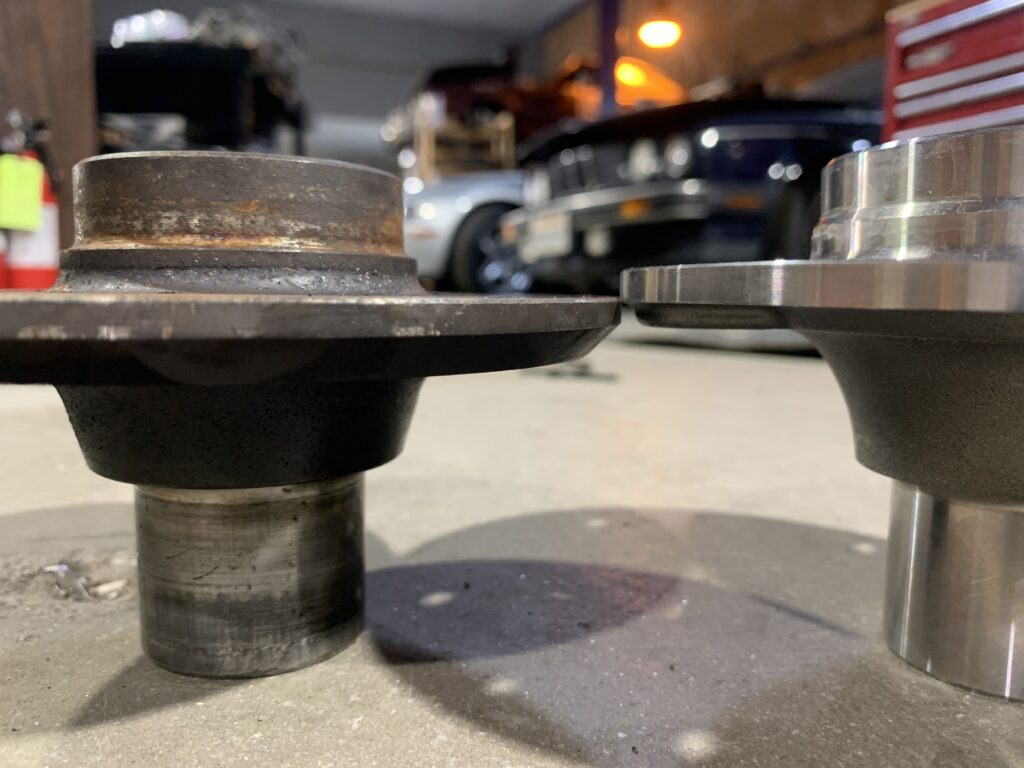
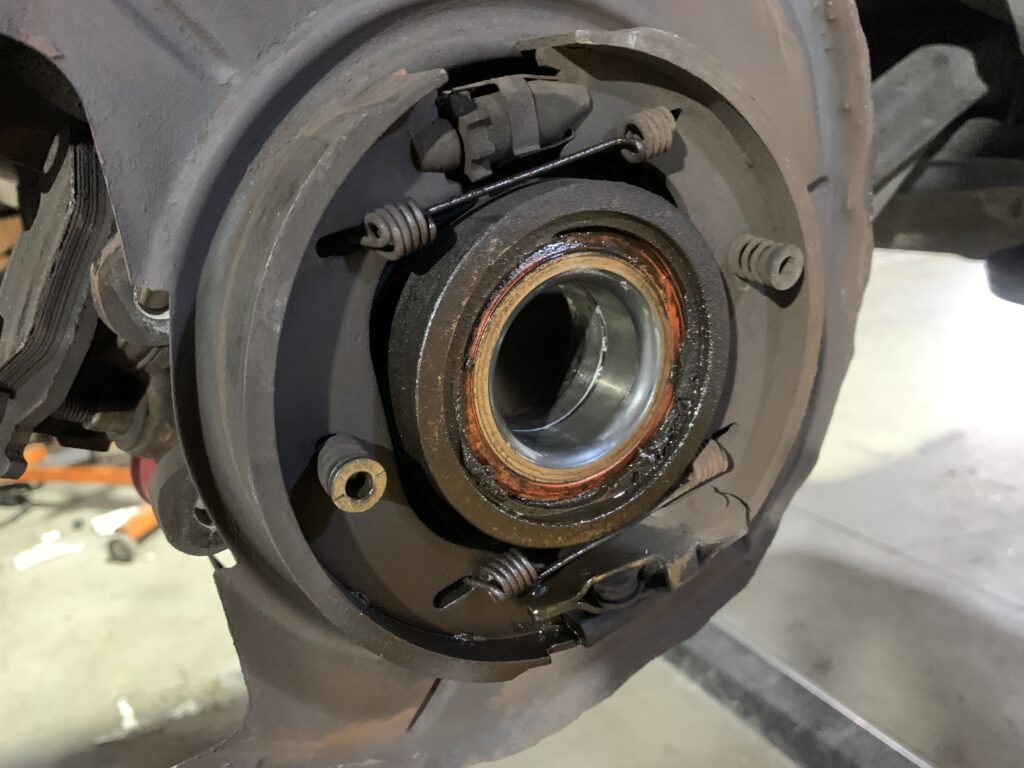
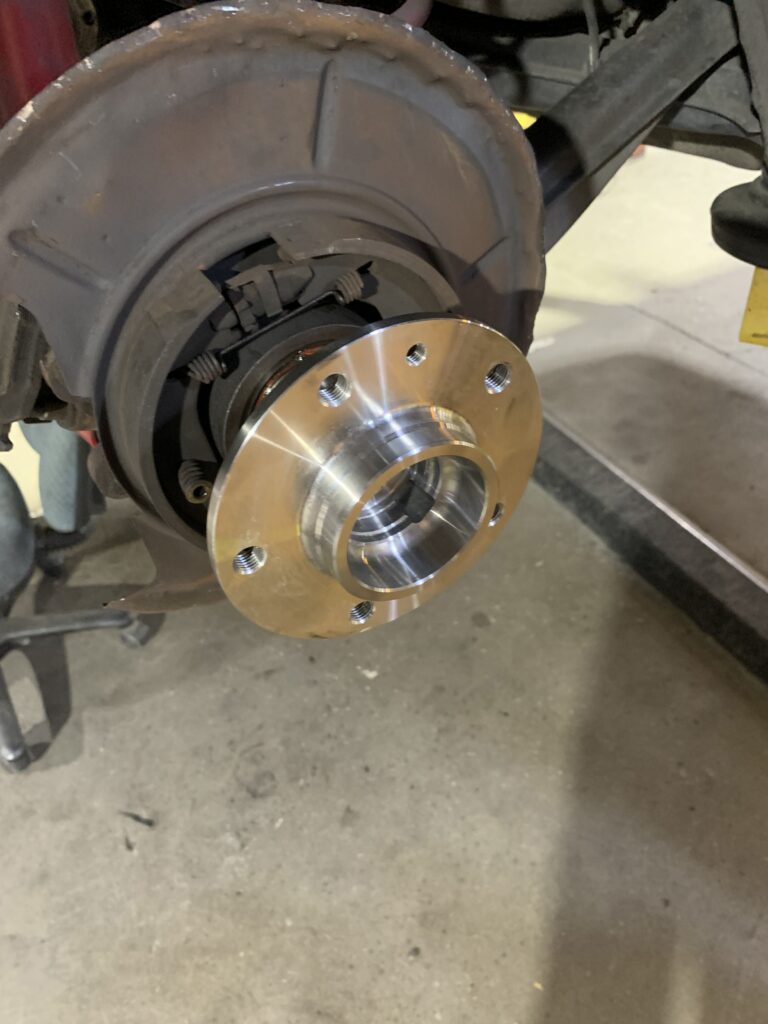
Having previously replaced them a few years ago, the rear bearings had “only” 45k miles on them. While not fresh, they were still in good shape and they tend to last at least 150k street miles in my experience. Eventually a friend stopped by to reassure me they were fine, so I kept pressing on —bad pun intended–with the M3 hub install. Once the hubs were in their new home, I refitted the axles, mounted the brake hardware, and massaged the dust shield to clear the new rotors. By this point I was pretty beat.
Fluid Dynamics and Ruined Clothes
With all the suspension and brakes installed, the last bit to tackle was swapping the brake lines onto the calipers, fitting the new master cylinder, then bleeding the system. To be honest, I wasn’t going to swap the master cylinder at first because someone else had booked the lift for the next day, but ultimately decided I only wanted to bleed the brakes once, so no time like the present…
Aside from one stubborn brake line fitting, the lines easily swapped over to the new calipers. Having saved some time with the rear wheel bearings, I decided to install the new master cylinder, but only after eating a Wendy’s burger and fries. From there I proceeded to bleed the system with new fluid, bolted on a set of stock 15-inch M3 wheels, and set the car on the ground to inspect everything…plus clean up the battlefield of parts and tools left on the shop floor.

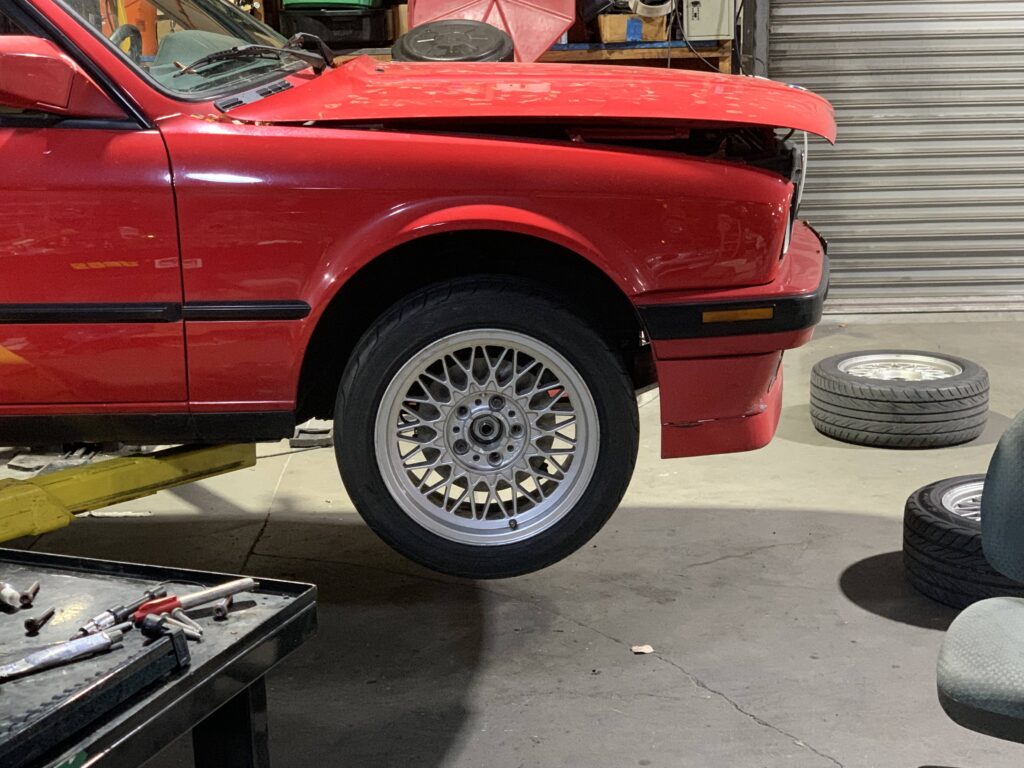
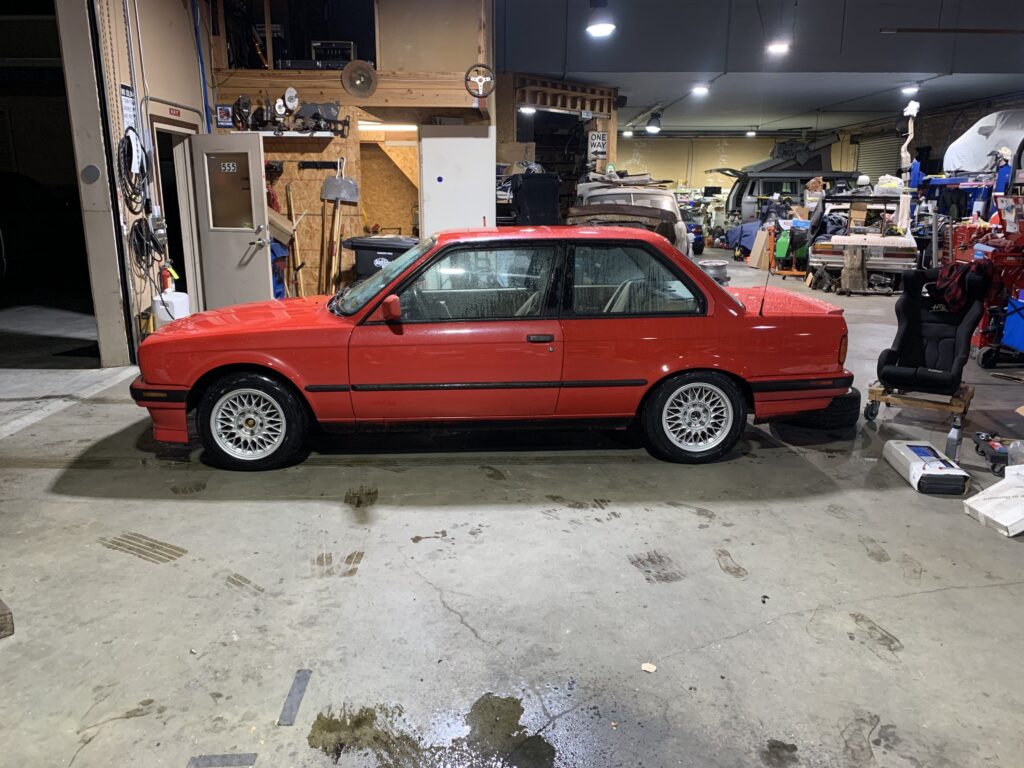
Unfortunately I couldn’t drive the car very far after finishing the install. The alignment was so far out of whack that the steering wheel could only offer directional suggestions instead of actually steering the car. Just like the night before, the adventure would resume after catching some Z’s.
All for the Long Haul
The following day I dropped the car off for an alignment and was finally able to give the car a shakedown. So two days of work and…(drumroll please) the car drives practically the same aside from a firmer brake pedal. So was it a complete waste of time and money?
Under most circumstances I would say yes, save your money and find some cool 4-lug wheels. If you don’t have excessive power (S52 240hp and below), a good set of brake pads and sticky tires will work perfectly fine, especially for street driving. In my case, it was a project I wanted to try for the sake of doing it, and ultimately I wanted access to the plethora of 5×120 OEM BMW wheels that can be had fairly cheap. The larger brakes are definitely appreciated, but I never personally had any issues with the stock e30 brakes either. On the wheel front though, the 4×100 Ronal LS wheels I had used for many years were starting to get beat up and more costly to source replacements. I also disliked having to use undersized Miata tires as 15-inch 200TW options aren’t available in the correct e30 size. Luckily my Ronals were in decent shape and I was able to sell them to offset a solid chunk of the total project cost.
So are there any upsides to this two day suspension and brake swap thrash-a-thon? Believe it or not yes:
- Larger heavier duty front wheel bearings
- Ability to remove strut housing without separating ball joints
- Larger rotors front (260x22mm increased to 280x25mm) and rear (258x10mm increased to 282x12mm) that still clear 15-inch wheels
- Strut attachment for more effective front sway bar
- Retain e30 factory ABS functionality
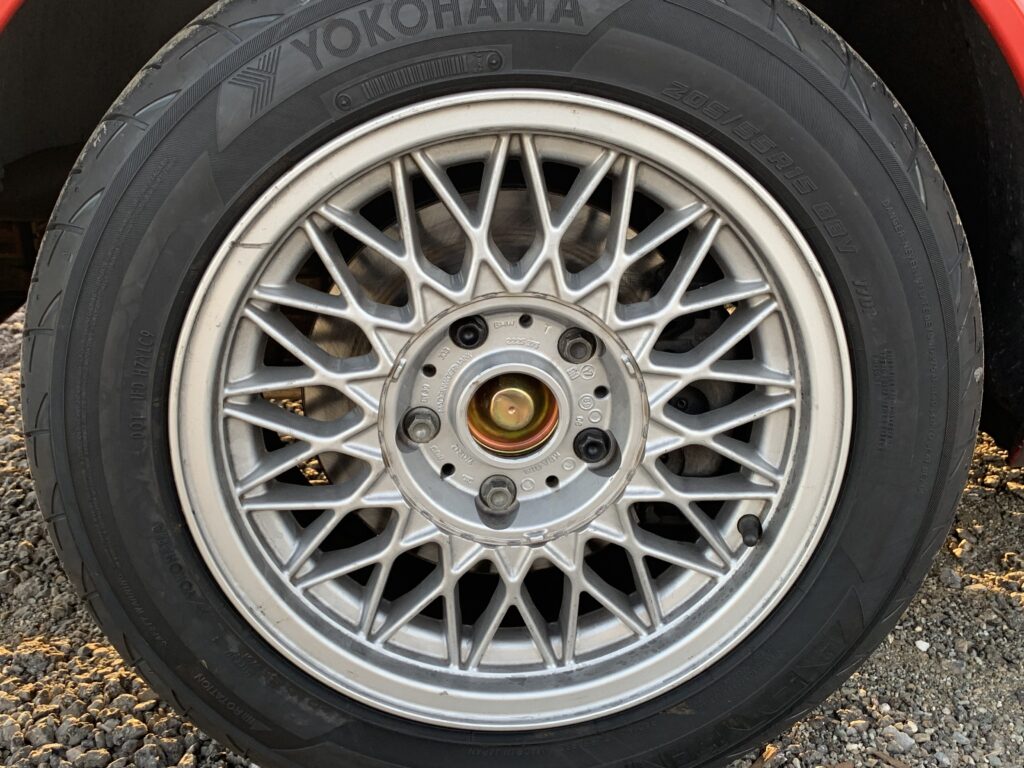
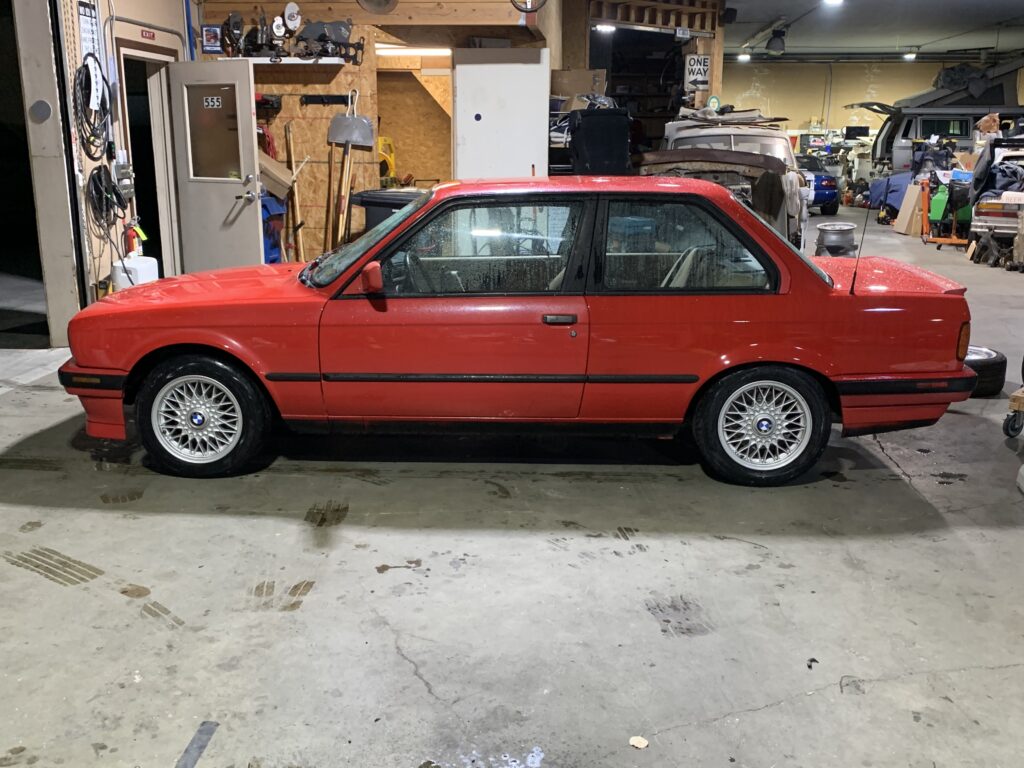
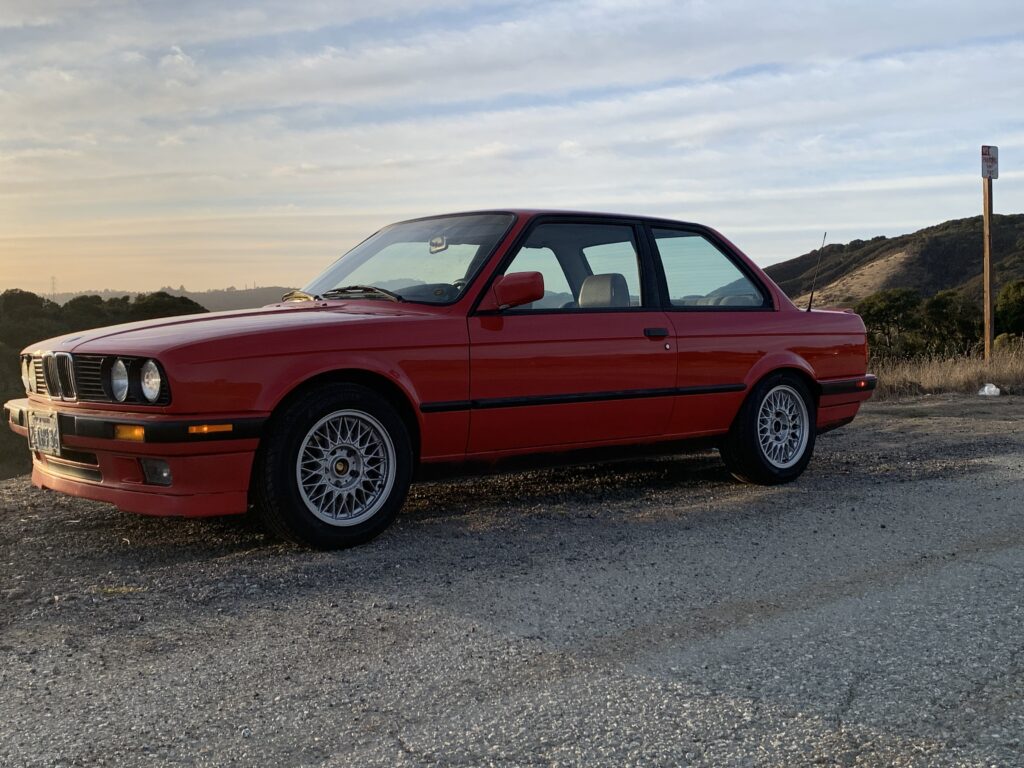
Out of curiosity, I re-weighed the car with a complete interior and full tank of gas and it was 2729 lbs. vs the previous 2701 lbs. on the stock 4-lug setup. I forget if I had the trunk liner or factory jack in before, but it’s fair to say the car gained somewhere between 20 and 30 pounds, my guess being the larger front calipers and rotors being the bulk of it. However, with everything removed from the interior like you would for a track day (no spare, trunk liner, floor mats, jack, etc.), the car weighed 2666 lbs which isn’t too shabby for a street car.
More importantly, it will temporarily fend off the bug to buy an e30 M3 as I now have a car with some M3 bits (but missing the iconic fender flares). There are a few items that still need addressing though, like installing wheel studs and getting small spacers to run e38 16×8 wheels or 17×8 e34 M5 wheels, but that will come in due time. For now I can check 5-lug off the e30 list of “2008 cool message board modifications” and relax knowing I won’t be doing it again any time soon…or so I hope!
6-Month Update
Now that I’ve lived with the 5-lug setup on the car for several months and clocked a few thousand miles in the process, I’ve learned a few other lessons worth sharing.
Wheel Fitment Not Easy: It was only a matter of time before I wanted to try some other wheels on the car, and my Will has both the e38 16×8 weaves and 17×8 M-Systems in his “inventory.” The first wheels I tried were the e34 M5 M-System wheels, which required a 5mm spacer up front to clear the caliper, and needed a fender roll out back to prevent rubbing with a 215/40r17 tire. Over big dips however I was still fighting rubbing under rear suspension compression. I figured the offset was slightly too aggressive and tried the 16-inch wheels with slightly more positive offset, but ran into the same problem. So what’s the deal?
It turns out that the later model e30s (1988+) have a bump in the inner fender/wheel well that the tire can contact when using lower offset wheels. I checked an early model car for comparison and this protrusion doesn’t exist. So an early car is arguably better for aggressive wheel fitments as there is more clearance. Additionally the early car doesn’t need as severe of a rake to mitigate the drooping rear end illusion of the late model due to the wheel arch cutouts. Not wanting to clearance my inner fender with a hammer just yet, it was back to the M3 15×7 wheels.
Brake Pad Selection: Like many old cars, parts support becomes scarcer with age. In the case of the e30 M3, performance brake pads aren’t as plentiful these days, specifically front brake pads. So when shopping for track pads for the e30 with M3 calipers, it’s easy to find rear brake pads, but the fronts seem to be far and few in between. Fortunately there are a few manufacturers left, but I can’t get the PFC08 pads I had enjoyed on the car with the 4-lug suspension.
I do still stand by the notion that the brakes are better feeling than the 4-lug car. I’ve recently tried cars with 4-lug and the 944 booster, and my e21 booster with the 25mm master cylinder and e30 M3 brakes is a lot more confidence inspiring. Gotta take those the small victories while you have them…
Front Wheel Arch Centering: If you’re a forum nerd like I am, you’ll know that people had mocked the e36 based 5-lug swaps because they lack caster and don’t center the front wheels correctly in the arch. It turns out the e30 M3 5-lug, the “100% factory perfect” suspension, suffers from this phenomenon as well.
I’d have to look at my alignment sheet as the car drives just as good as it did before, and doesn’t have any real alignment issues unlike the e36-based 5-lug which was never actually intended to work correctly on an e30. However the once-you-see-it thing with the e30 M3 suspension is that the wheels aren’t centered in the front arch opening either. It takes a trained eye, but it certainly looks a little goofy compared to the 4-lug suspension. The M3 has this problem as well, which has led owners to use the 96+ e36 M3 control arms to fight this problem, but at $300 a side, it’s a hefty sum over a standard control arm that functions perfectly fine.

